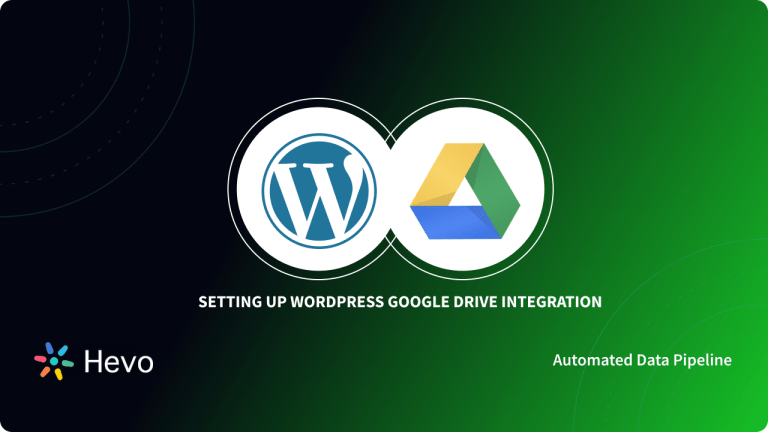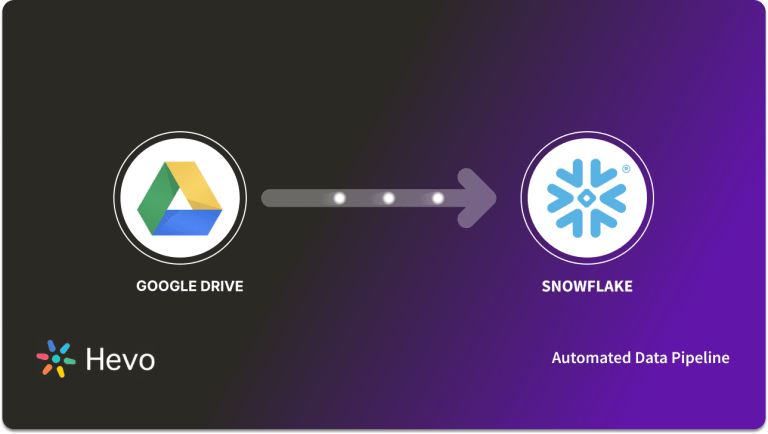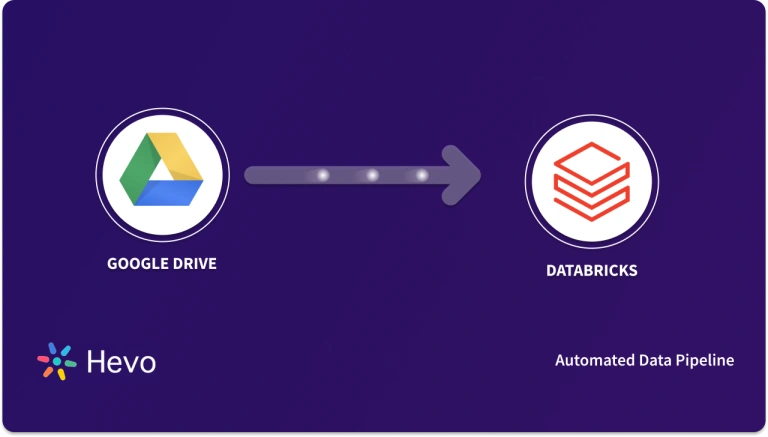Salesforce focuses on providing Customer Relationship Management (CRM) service. It also provides a complementary suite of enterprise applications focused on Application Development, Data Analytics, Marketing Automation, and Customer Service.
Google Drive is an incredibly robust service for Cloud-based backups. Most people think of it as the Barebones Cloud system, but that’s arguably a major understatement. It’s a powerful cloud platform that you can access from anywhere in the world, and it also allows you to store and access data of different formats.
This blog gives a brief introduction to Salesforce and Google Drive before diving into the steps involved in Salesforce Google Drive Integration. It also talks about the benefits of Salesforce Google Drive Integration and the limitations of using Files Connect to establish Salesforce Google Drive Integration.
Table of Contents
Introduction to Salesforce
Salesforce has distinguished itself as a robust CRM platform that brings companies and customers together. This integrated CRM platform gives individuals across all your departments including Commerce, Sales, Service, and Marketing, a single, shared view of every customer.
Salesforce ensures a personalized experience with its Customer 360 Platform. Some of the key products offered by Salesforce as a part of their suite are as follows:
- Salesforce Service Cloud: Salesforce Service Cloud offers all the tools you might need to strengthen Customer Engagement. It allows you to automate business processes with intelligent workflows, support customer interactions across every channel, get actionable insight into every customer interaction, and drive revenue with the power of Artificial Intelligence.
- Salesforce Analytics (Tableau CRM): Tableau allows you to leverage intuitive drag-and-drop analysis at every skill level. It also allows you to quickly spot visual patterns and share insights across teams to drive growth.
- Salesforce Commerce Cloud: The Salesforce Commerce Cloud allows you to convert more customers with personalized buying experiences. You can implement your strategies faster with easy-to-use tools. This allows you to stay agile and start generating a higher ROI (Return on Investment) sooner.
- Salesforce AppExchange: Salesforce AppExchange is an Enterprise Cloud marketplace. It allows you to find proven experts and apps to help you solve business challenges fast and extend your Salesforce Customer 360 platform from anywhere. This can be extended across any department, industry, and product. It also offers app guides to help you zero in on the right apps to suit your unique business challenges.
Introduction to Google Drive
Google Drive has established itself as a ubiquitous synchronization and file storage service developed by Google. Google Drive integrates seamlessly with Google Sheets, Google Slides, Google Docs among other apps that allow your team to effectively collaborate in real-time.
Businesses rely on Google Drive primarily because of its infrastructure. The tech stack is built on top of Google Cloud Storage, one of the most widely used IaaS offerings in the market. Moreover, Google Drive comes with free access to a plethora of web-based applications that make running a business considerably easy, and best of all, they integrate seamlessly with other services offered by Google.
It also provides secure and encrypted access to your files. Any and all files shared with you are proactively scanned for spam, malware, phishing, and ransomware to minimize risk to your devices.
Understanding the Benefits of Salesforce Google Drive Integration
Here are a few salient benefits of Salesforce to Google Drive Integration:
- Robust Data Security: Salesforce Google Drive Integration is highly secure. It is known for providing multi-level security to your data. This allows you to work at ease knowing your data is in safe hands.
- Reduction in Cost: Salesforce has limited storage whereas Google Drive offers ample storage. Industries that require large files to associate to the Salesforce Objects can cut costs with the Salesforce Google Drive Integration. This is because these industries no longer have to purchase expensive Salesforce storage.
- Improved Efficiency: The Salesforce Google Drive Integration ensures improved efficiency as files like Google Sheets, Google Docs, and other presentations needn’t be downloaded first to upload to Salesforce. This helps save valuable time for the user.
- Real-time Synchronization: Any change you make to a file can be easily reflected on both platforms in seconds. This two-way synchronization is an essential benefit of Salesforce Google Drive Integration.
Steps to Set up Salesforce Google Drive Integration
You can use Files Connect to establish a connection between Google Drive and Salesforce in 7 easy steps.
Here are the steps involved in setting up Salesforce Google Drive Integration in a seamless fashion:
Step 1: Enabling Salesforce Files Connect for the Salesforce Instance
- Navigate to Build->Customize-> Salesforce Files-> Settings-> Files Connect. In the File Sharing setting select ‘Reference’ or ‘Copy’ based on your business requirement.
Step 2: Setting Up User Access Permissions
- To use Permission Sets to set up User Access Permissions, go to “Permission Set-> System Permissions-> Edit and select “Files Connect Cloud”.
- Click on Save to proceed to the next step.
Step 3: Creating an Auth Provider
- To create an Auth Provider, navigate to Quick Find in setup and find Auth Provider.
- Click on the “New” option followed by the “Provider Type”. Select OpenID Connect from the available options.
- Enter the URLSuffix and Name fields. Give dummy values for the Consumer Secret and Consumer Key.
Enter the Authorize Endpoint URL as https://accounts.google.com/o/oauth2/auth?access_type=offline&approval_prompt=force, Default Scopes as “openid email profile https://www.googleapis.com/auth/drive”, and Token Endpoint URL as https://accounts.google.com/o/oauth2/token.
- Click on the Save button to proceed to an Auth Provider Detail Screen. This screen contains the necessary details like “Callback URL” that will be needed in the upcoming steps.
Step 4: Configuration of Google Drive
- To configure Google Drive, navigate to https://console.developers.google.com/project and create a “New Project”.
- You need to enable “Google App Marketplace SDK” and the “Google Drive API” for the newly created project.
- Next, create a project in the “OAuth Consent Screen” before creating the “Client ID” in the credential.
- Finally, create a Client ID in a credential. Select the web application and place the “Callback URL” obtained in the previous step in Authorized Redirect URIs. Click on the “Create” button to create the “Client Secret” and the “Client ID”. Copy these as you would be using them for the next step.
Step 5: Reconfiguration of Auth Provider
- Place the “Client Secret” and the “Client ID” obtained in the last step in “Consumer Secret” and “Consumer Key” respectively.
Step 6: Creation of External Data Source
- Navigate to Setup->Build-> Develop-> External Data Source.
- Click on the New External Data Source option. You can use any label and name you like, but it’s simpler to use names, similar to authentication providers and other apps.
- In Type choose Files Connect: Google Drive. Here the Identity Type is Per User and the Authentication Protocol is OAuth 2.0.
- In the Authentication Provider, click on Lookup and select the Authentication Provider that was created in the previous steps.
- Click on Save, to create the External Data Source. In the next step, you will have to enable it in the permission set.
Step 7: Configuration of Permission Set
- Navigate to Permission Set-> External Source-> Edit. Add and select the newly created data to the Enabled External Data Source section.
- Click on the Save button to proceed.
- Once you’ve customized and gone through all of the steps mentioned above, you need to test the connection. Navigate to Files Tab-> External Files-> Google Drive. Check to see if you can access data from Google Drive in Salesforce.
Understanding the Limitations of using Files Connect for Salesforce Google Drive Integration
Here are a few limitations of using Files Connect for Salesforce Google Drive Integration:
- Files Connect doesn’t allow you to upload files directly from Salesforce to Google Drive. You can only access and download it.
- The Google Drive API only allows you to make 10,000 requests every 100 seconds or 1000 requests per 100 seconds per user.
Conclusion
This blog gives a brief introduction to Google Drive and Salesforce before diving into the steps involved in the integration. This includes the features and benefits of the two tools in question. It also talks about the benefits of this integration and the limitations of using Files Connect to establish Salesforce Google Drive Integration.
Extracting complex data from a diverse set of data sources like Salesforce and Google Drive to carry out an insightful analysis can be challenging, and this is where Hevo saves the day!





